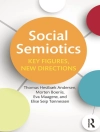Although semiotics has, in one guise or another, ftourished uninterruptedly since pre- Socratic times in the West, and important semiotic themes have emerged and devel- oped independently in both the Brahmanie and Buddhistic traditions, semiotics as an organized undertaking began to 100m only in the 1960s. Workshops materialized, with a perhaps surprising spontaneity, over much of Europe-Eastern and Western- and in North America. Thereafter, others quickly surfaced almost everywhere over the litera te globe. Different places strategically allied themselves with different lega- eies, but all had a common thrust: to aim at a general theory of signs, by way of a description of different sign systems, their comparative analysis, and their classifi- cation. More or less permanent confederations were forged with the most diverse academic disciplines, and amazingly varied frameworks were devised-suited to the needs of the times and the sites-to carry the work of consolidation forward. Bit by bit, mutually supportive international networks were put together. Today, it can truly be asserted that semiotics has become a global enterprise. This, of course, is far from saying that the map is uniform or even that world-wide homogeneity is in the least desirable. While our conjoint ultimate goal remains steadily in focus, the multiplicity of avenues available for its realization is inherent in the advent ure of the search itself.
Thomas A. Sebeok & Jean Umiker-Sebeok
Semiotic Sphere [PDF ebook]
Semiotic Sphere [PDF ebook]
Beli ebook ini dan dapatkan 1 lagi PERCUMA!
Bahasa Inggeris ● Format PDF ● ISBN 9781475702057 ● Penyunting Thomas A. Sebeok & Jean Umiker-Sebeok ● Penerbit Springer US ● Diterbitkan 2012 ● Muat turun 3 kali ● Mata wang EUR ● ID 4731264 ● Salin perlindungan Adobe DRM
Memerlukan pembaca ebook yang mampu DRM












